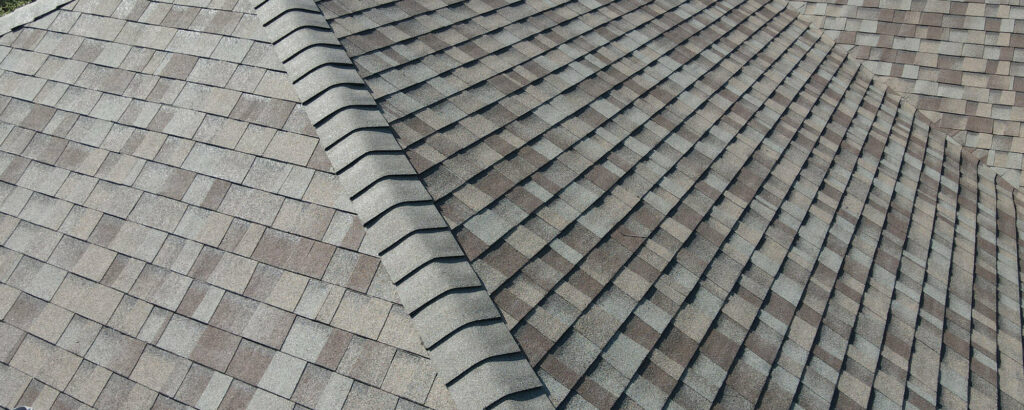Modern architecture is all about sleek, contemporary buildings that look sleek, contemporary and cutting-edge. That’t means no half-timbered Tudor cottages or baroque gothic manors. Modern architecture should be clean, uncluttered and simple in its appearance. That doesn’t mean you can’t have a roof on your home or business premises; if anything, roofs are more important than ever before. An overlooking roof is the covering of a building that covers its walls and other visible structural members (i.e., beams, posts, and columns). They are often seen as secondary to the main structure itself – like an accessory – but they serve an important purpose: protecting what is underneath from damage from the elements (especially precipitation) and providing an opportunity for natural light to filter in from above. Such structures date back thousands of years as part of many different types of architecture. Roofs come in many shapes and sizes depending on the type of building they are attached to; here we take a look at some modern examples of roofing that you might want to consider for your new build…
Why should you care about roofing?
Getting the roofing for your building right is important for a few reasons. For one thing, your roof is likely the single most expensive item of your entire construction project; and it’s something that you don’t get to see much of. So it’s easy to forget about it. That’s when you have to remember that it has a huge role to play: it protects your interior space from unwanted weather conditions, keeps your energy bills low, and has a huge impact on the look of your home or business. When you’re choosing a roofing material, there are a few things you need to consider. First, you want to make sure it is durable enough to withstand the elements (such as wind, rain and snow) that it will be exposed to. You also want a roofing solution that will not only look good now, but that will also retain its appearance for many years to come.
Concrete roofs
Concrete is an incredibly strong material that is durable and has a high tensile strength. It’s also completely recyclable, chemical-free and is 100% waterproof. All of these qualities make it perfect for use in roofing solutions such as tiled roofs, pitched roofs and flat roofs. Concrete roofs are most commonly seen on fire stations as they are built to last and are extremely strong. There are also other types of buildings that can also benefit from a concrete roof, such as industrial buildings or any other building that requires a strong roof. A concrete roof can come in many different colours, but is often a dark colour because it helps it to absorb less sunlight.
Tiled roofs
Tiled roofs are one of the oldest forms of roofing. They are popular in many parts of the world, and have been for hundreds of years. Tiled roofs are popular for a number of reasons: The versatility of tiles makes them an excellent choice for a wide range of architectural styles. You can opt for tiles in a variety of colours, sizes and textures. Tiles are relatively easy to install, making them a good choice for DIY-minded homeowners.
Metal roofs
Metal roofs have been used for centuries as a way to keep buildings protected from the elements. They are very popular in coastal regions, given their excellent resistance to corrosion from salt. They are also common in states where heavy snowfall is common, given their resistance to weight. Metal roofs come in a variety of types, as well as a variety of colours. You can choose from types such as corrugated, standing seam, and shingles, just to name a few. If you want to add some style to your home, metal roofs are a great choice. They look great on both new and old homes, offering a timeless aesthetic that suits any style.
Artificial roofing options
Not everyone loves the look of natural roofing materials, and that’s where artificial roofing materials come in. Artificial roofing materials are used in many architectural designs and feature prominently in architectural styles where natural materials are either rare (such as tropical rainforest architecture) or undesirable (such as desert architecture). Common artificial roofing materials include: – Polyurethane Foam (PUF): PUF is a lightweight, low-maintenance material that is energy-efficient and inexpensive to install. It is available in a variety of thicknesses, colours, and densities. – Fibreglass: Although fibreglass is typically used as an insulation material, it can also be used as a roofing material. It is lightweight, durable, and requires little or no maintenance. – Concrete: Concrete is used to create a variety of architectural elements, including roofs. It is available in a wide range of textures, colours, and finishes.
Conclusion
When you’re building a new home or commercial building, you want to make sure your roof is designed to last. It’s the first thing people notice when they look at the building, so it’s important that it be visually appealing. Luckily, modern roofing materials are sleek and stylish, so you can pick a roofing material that suits your building and your taste. As well as being visually pleasing, roofing materials need to be strong and resilient. They need to be able to withstand extreme weather conditions and last for many years without needing to be replaced. Modern roofing materials are ideal for this task and can be found on many modern buildings.
